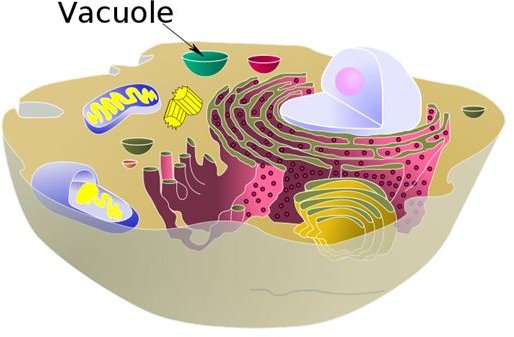What Good is a Vacuole? What Does a Vacuole Do?
What Does a Vacuole Do?
Vacuoles are shape shifters - they don’t have a pre-determined shape, size or structure. Instead, the form they take depends on the contents they house. Their structure is simple - essentially a membrane surrounds a fluid-filled mass, and that fluid depends on what’s going in and out of the cell.
What good is a vacuole?
-
A vacuole acts like a rubbish bin, it contains waste products that might damage the cell. It’s a proactive little garbage collector in that it isolates and absorbs potentially harmful material, and it also helps to eject unwanted substances from the cell.
-
It also helps to maintain acidic pH levels as well as the cell’s hydrostatic pressure.
-
Vacuoles are also repositories of useful substances such as proteins and carbohydrates.
-
Vacuoles also help to destroy invading bacteria and mis-folded proteins that can bring about cell destruction.
Plant Cell Vacuoles
Plant cells tend to have one large central vacuole which stores food (sugar and salts in solution) and water. The storage of water helps to support the plant. Absorbing more water makes a vacuole bigger which helps a plant to grow. Most of a cell’s volume depends on what’s inside a vacuole. If there isn’t much water about the vacuoles shrink and the plant droops and whithers. When there is abundance of water the vacuoles are topped up once again and the plant regains its normal structure.
Animal Cell Vacuoles
Animal cell vacuoles are much smaller than their plant cell counterparts and in animal cells their roles are more subservient. They assist in expelling proteins and lipids from the cell. The process is known as exocytosis and the role of the vacuole here is to store the molecules and facilitate their transport.
The reverse process is called endocytosis and this is where a cell engulfs bacteria or dead tissue or other potentially harmful material from the extracellular environment. It can happen in a number of ways. In phagocytosis the material that will be engulfed touches the cell membrane and the cell surrounds it, isolates it, and eventually stores it in a vacuole. Phagocytosis is literally “cell eating.” In pinocytosis the cell membrane folds and the material (here it is in solution) is dissolved into the cell for storage inside a vacuole.
